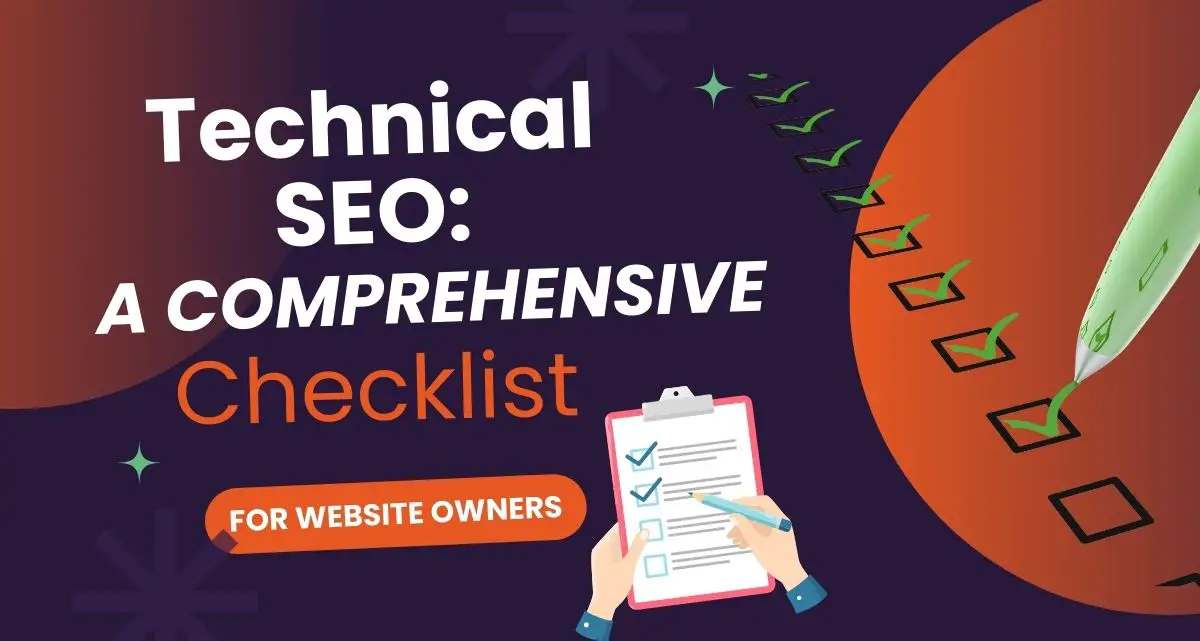Why Technical SEO Matters
Technical SEO is the backbone of a high-performing, search-engine-friendly website. Without proper technical optimisation, even the best content may struggle to rank.
Search engines must be able to crawl, index, and understand your site’s structure to rank it effectively.
At Afrimasterweb, we specialise in helping businesses optimise their websites for search engines. This guide will provide a step-by-step technical SEO checklist to ensure your website is fast, mobile-friendly, secure, and optimised for better search visibility.
- 1. Website Crawling & Indexing Optimisation
- 2. Website Speed & Performance Optimisation
- 3. Mobile-Friendliness & Responsive Design
- 4. Website Security & HTTPS Implementation
- 5. Structured Data & Schema Markup
- 6. Internal Linking & Site Architecture
- 7. Technical SEO Monitoring & Ongoing Optimisation
- Conclusion: Prioritise Technical SEO for Long-Term Success
1. Website Crawling & Indexing Optimisation
Search engines must crawl and index your website correctly. Follow these steps to ensure your content appears in search results.
1.1 Create and Optimise Your Robots.txt File
- Use a robots.txt file to guide search engines on what to crawl and what to ignore.
- Ensure it does not block important pages from being indexed.
1.2 Submit an XML Sitemap
- Generate an XML sitemap and submit it to Google Search Console.
- Ensure the sitemap is updated regularly as you add new content.
1.3 Fix Crawl Errors
- Regularly check Google Search Console for crawl errors.
- Resolve issues like 404 errors, redirect chains, and server errors.
Also read Mastering SEO: A Beginner’s Guide
2. Website Speed & Performance Optimisation
Page speed is a major ranking factor. A slow website negatively impacts user experience and SEO rankings.
2.1 Optimise Page Speed & Core Web Vitals
- Improve Largest Contentful Paint (LCP), First Input Delay (FID), and Cumulative Layout Shift (CLS).
- Use Google PageSpeed Insights to identify performance issues.
2.2 Enable Browser Caching
- Use caching plugins to store static files and improve load times.
- Enable gzip compression to reduce file sizes.
2.3 Optimise Images & Media Files
- Compress images using WebP format for faster loading.
- Use lazy loading to delay image loading until visible.
Also read How to Write High-Ranking SEO Content
3. Mobile-Friendliness & Responsive Design
Google prioritises mobile-first indexing, making mobile optimisation critical for rankings.
3.1 Implement a Responsive Design
- Ensure your website is fully responsive on all devices.
- Test using Google’s Mobile-Friendly Test.
3.2 Improve Mobile Page Speed
- Optimise font sizes, tap targets, and layout shifts for mobile users.
- Minimise unnecessary scripts and pop-ups that affect usability.
Also read Top SEO Tools to Skyrocket Your Rankings
4. Website Security & HTTPS Implementation
Google ranks secure websites higher. HTTPS is essential for data protection and user trust.
4.1 Install an SSL Certificate
- Ensure your website uses HTTPS instead of HTTP.
- Update all internal links to HTTPS versions.
4.2 Monitor Security Issues
- Regularly scan for malware and vulnerabilities.
- Use tools like Google Safe Browsing to detect security threats.
5. Structured Data & Schema Markup
Structured data helps search engines understand your content better.
5.1 Implement Schema Markup
- Add structured data for rich results (e.g., FAQ, reviews, products).
- Use Google’s Rich Results Test to validate schema.
5.2 Optimise Breadcrumb Navigation
- Implement breadcrumb schema for better site navigation.
6. Internal Linking & Site Architecture
A well-structured website improves crawling, indexing, and user experience.
6.1 Optimise Internal Linking
- Use descriptive anchor text for internal links.
- Link relevant pages together to distribute link equity.
6.2 Improve URL Structure
- Use short, clean URLs with relevant keywords.
- Avoid dynamic URLs with unnecessary parameters.
7. Technical SEO Monitoring & Ongoing Optimisation
SEO is an ongoing process. Regularly monitor and update your website.
7.1 Conduct Regular SEO Audits
- Use tools like Google Search Console, Ahrefs, and SEMrush.
- Fix errors and optimise for new ranking factors.
7.2 Track & Improve Performance
- Monitor bounce rate, user engagement, and rankings.
- Continuously optimise content, site speed, and structure.
Conclusion: Prioritise Technical SEO for Long-Term Success
Technical SEO is a critical component of search engine success. A well-optimised website ensures better rankings, higher traffic, and improved user experience. Implementing this checklist will help your site stay competitive and search-friendly.
Now it’s your turn! Drop a comment below, share this post, and let’s discuss how technical SEO can improve your website. Need expert assistance? Contact Afrimasterweb Agency today for a full SEO audit and optimisation strategy!







